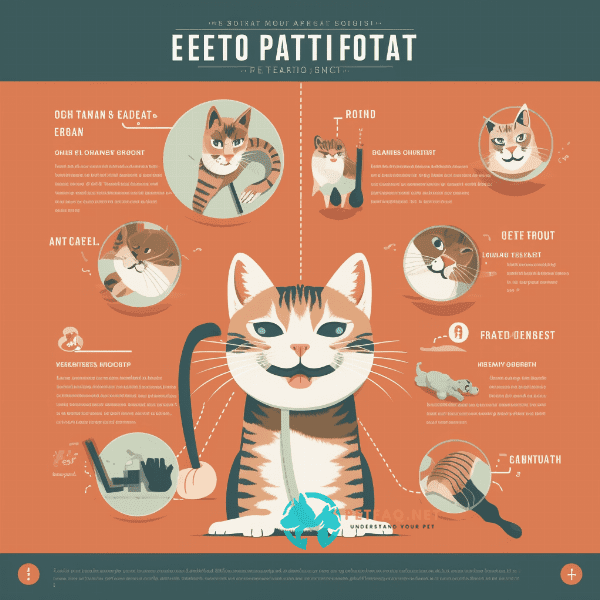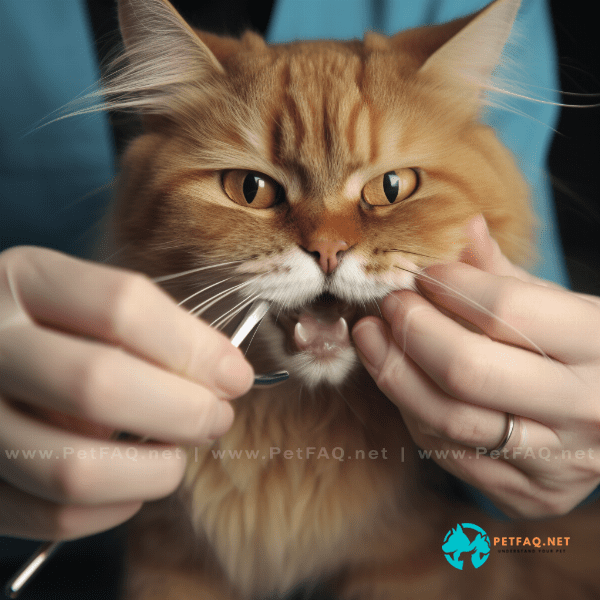Table of Contents
- Introduction: The Importance of Feline Dental Health
- What is Periodontal Disease in Cats?
- Causes and Risk Factors of Periodontal Disease in Cats
- Signs and Symptoms of Periodontal Disease in Cats
- Diagnosis and Treatment of Periodontal Disease in Cats
- Prevention of Periodontal Disease in Cats
- Home Care for Your Cat’s Teeth and Gums
- The Role of Diet in Feline Dental Health
- When to See a Vet for Your Cat’s Dental Health
- Conclusion: Keeping Your Cat’s Teeth and Gums Healthy for Life
Introduction: The Importance of Feline Dental Health
Cats are known for their independent nature and self-sufficiency, but when it comes to their dental health, they rely heavily on their owners. Periodontal disease in cats is a common and often overlooked issue that can have serious consequences for their overall health and well-being.
The Prevalence of Periodontal Disease in Cats
According to the American Veterinary Dental Society, periodontal disease is the most common clinical condition in cats over three years of age. In fact, up to 70% of cats will develop some form of periodontal disease in their lifetime. This means that as a cat owner, it’s important to pay close attention to your pet’s dental health and take preventative measures to protect their teeth and gums.
The Impact of Periodontal Disease on Cats
Periodontal disease in cats can lead to a range of health issues beyond just dental problems. Bacteria from the mouth can enter the bloodstream and cause infections in other parts of the body, including the kidneys, liver, and heart. It can also cause pain and discomfort for your cat, which can lead to changes in behavior or appetite.
The Benefits of Good Feline Dental Health
Maintaining good dental health in your cat can have numerous benefits. It can help prevent the development of periodontal disease and other dental issues, improve their overall health and quality of life, and even extend their lifespan. By taking a proactive approach to your cat’s dental health, you can help ensure that they stay healthy and happy for years to come.
In the following sections, we will explore the causes, symptoms, and treatment options for periodontal disease in cats, as well as discuss preventative measures you can take to keep your feline friend’s teeth and gums healthy.

What is Periodontal Disease in Cats?
Periodontal disease is a common condition that affects the teeth and gums of cats. It is caused by a buildup of plaque and tartar on the teeth, which can lead to inflammation, infection, and eventually, tooth loss.
The Stages of Periodontal Disease in Cats
Periodontal disease in cats typically progresses in stages, beginning with gingivitis and advancing to more severe forms of periodontitis.
Gingivitis
Gingivitis is the earliest stage of periodontal disease and is characterized by inflammation of the gums. This is caused by a buildup of plaque on the teeth and can result in red, swollen gums that may bleed when touched.
Early Periodontitis
As the disease progresses, it can lead to early periodontitis, which is characterized by the formation of pockets between the gums and teeth. These pockets can harbor bacteria, which can cause further inflammation and damage to the teeth and gums.
Advanced Periodontitis
In advanced periodontitis, the damage to the teeth and gums is more severe, with deep pockets, bone loss, and loosening of the teeth. At this stage, tooth loss is common, and the infection can spread to other parts of the body, leading to serious health issues.
Symptoms of Periodontal Disease in Cats
Recognizing the symptoms of periodontal disease in cats is important for early detection and treatment. Some common signs to look out for include:
- Bad breath
- Red, swollen, or bleeding gums
- Loose or missing teeth
- Difficulty eating or loss of appetite
- Drooling
- Pawing at the mouth
- Changes in behavior, such as increased irritability or aggression
If you notice any of these symptoms in your Periodontal cat, it’s important to seek veterinary care right away to prevent the condition from worsening.
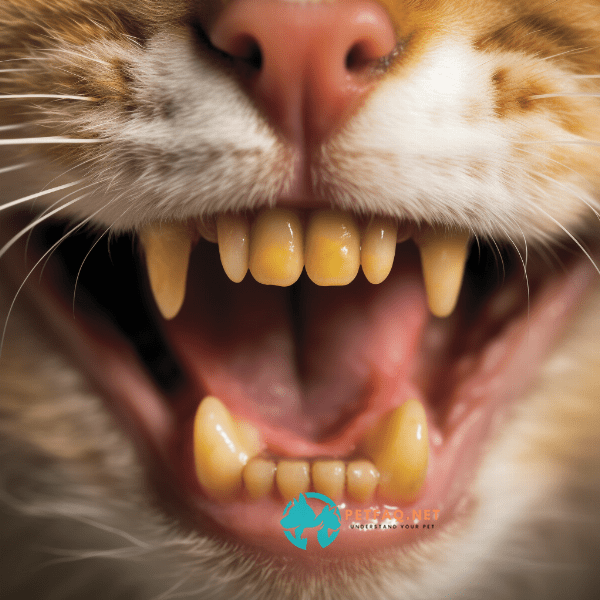
Causes and Risk Factors of Periodontal Disease in Cats
Periodontal disease in cats is caused by a buildup of plaque and tartar on the teeth, which can lead to inflammation, infection, and eventually tooth loss. However, there are several factors that can increase a cat’s risk of developing periodontal disease.
Poor Dental Hygiene
One of the most common causes of periodontal disease in cats is poor dental hygiene. Cats who don’t receive regular teeth cleanings or brushings are more likely to develop a buildup of plaque and tartar on their teeth, which can lead to gum inflammation and infection.
Age
Age is another risk factor for periodontal disease in cats. As cats get older, their teeth and gums become more susceptible to dental problems, making regular dental checkups and cleanings even more important.
Diet
A cat’s diet can also play a role in their dental health. A diet that is high in carbohydrates and low in protein can contribute to the development of plaque and tartar, increasing the risk of periodontal disease.
Genetics
Some cats may be genetically predisposed to periodontal disease, making them more susceptible to developing the condition even with good dental hygiene practices.
Other Health Conditions
Other health conditions, such as diabetes, can also increase a cat’s risk of developing periodontal disease. This is because high blood sugar levels can lead to an increase in bacteria in the mouth, which can contribute to the development of gum disease.
By understanding the causes and risk factors of periodontal disease in cats, you can take steps to prevent the condition from developing in your periodontal cat. Regular dental checkups, proper dental hygiene, and a healthy diet can all help keep your cat’s teeth and gums healthy and free from disease.
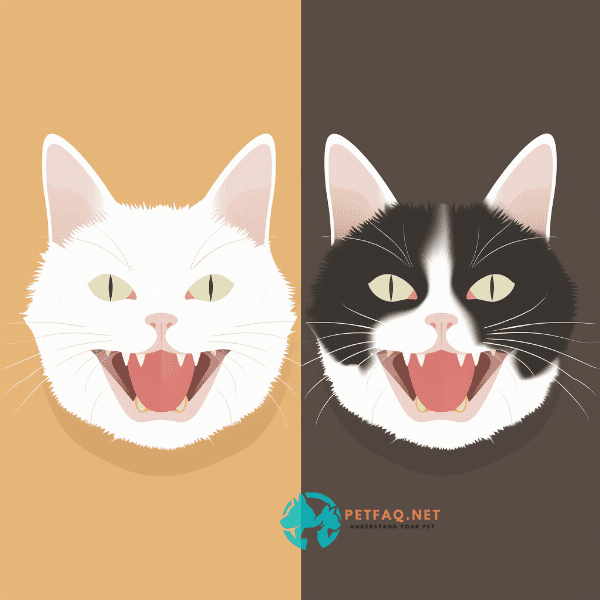
Signs and Symptoms of Periodontal Disease in Cats
Periodontal disease in cats can be difficult to detect, especially in the early stages. However, there are several signs and symptoms that you can look out for to help identify the condition.
Changes in Eating Habits
Periodontal disease can also cause changes in your cat’s eating habits. They may experience pain or discomfort when eating, or may avoid certain types of food altogether.
Red, Swollen Gums
Inflammation of the gums is another common sign of periodontal disease in cats. This can cause the gums to appear red and swollen, and may even lead to bleeding when touched.
Difficulty Chewing
If your cat is experiencing pain or discomfort in their mouth, they may have difficulty chewing their food. This can lead to weight loss and other health issues if left untreated.
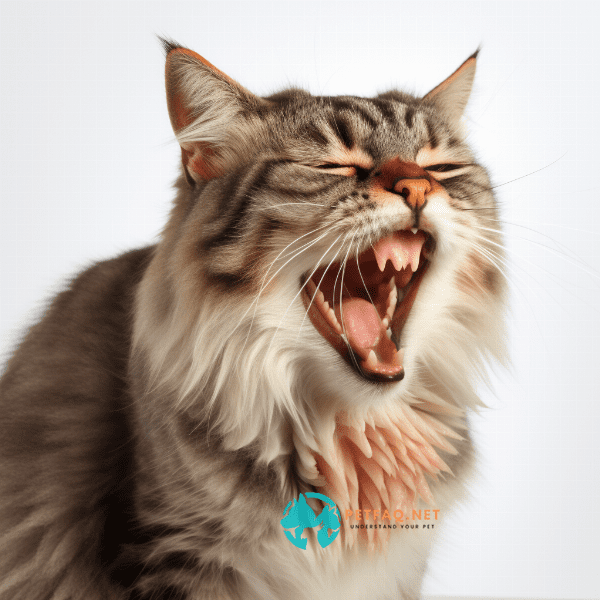
Diagnosis and Treatment of Periodontal Disease in Cats
Diagnosing and treating periodontal disease in cats requires the expertise of a veterinary professional. Here’s what you can expect if your cat is diagnosed with periodontal disease.
Diagnosis
The first step in diagnosing periodontal disease in cats is a dental exam performed by a veterinarian. During the exam, the vet will examine your cat’s teeth and gums, looking for signs of inflammation, infection, or other dental problems.
In some cases, the vet may also recommend dental X-rays to get a closer look at the roots of the teeth and the bone structure of the jaw.
Treatment
The treatment for periodontal disease in cats depends on the severity of the condition. In mild cases, a thorough cleaning of the teeth and gums may be all that’s needed to remove plaque and tartar buildup and prevent further damage.
In more advanced cases, your cat may require a dental procedure to remove damaged teeth or treat infection or inflammation in the gums. This may include antibiotics, pain management, or other medications to help your cat recover from the procedure.
Home Care
After your cat has received treatment for periodontal disease, it’s important to continue with good dental hygiene practices at home. This may include regular brushing of your cat’s teeth, using dental chews or treats to help clean the teeth, and scheduling regular dental checkups with your veterinarian.
By working with your veterinarian and staying vigilant about your cat’s dental health, you can help prevent the development of periodontal disease in your periodontal cat and ensure that they live a long, healthy life.
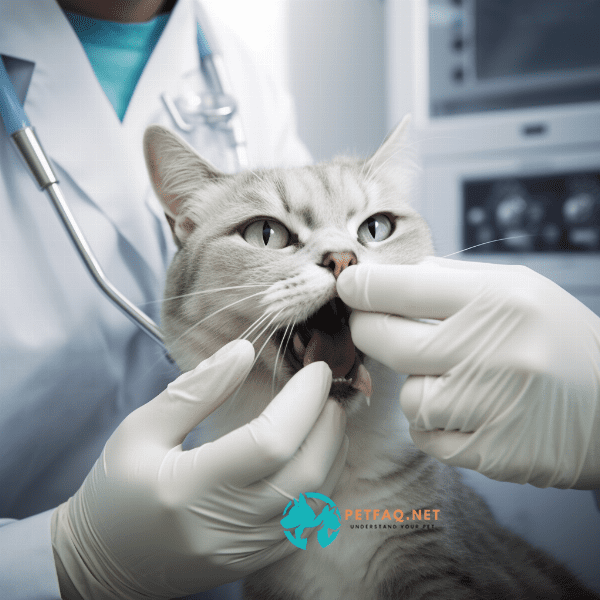
Prevention of Periodontal Disease in Cats
Preventing periodontal disease in cats is key to maintaining good dental health and preventing more serious health issues from developing. Here are some tips for preventing periodontal disease in your periodontal cat.
Good Dental Hygiene Practices
Dental Treats and Toys
In addition to regular dental checkups and good dental hygiene practices, providing your cat with dental treats and toys can also help prevent periodontal disease. These treats and toys can help scrape away plaque and tartar buildup and keep your cat’s teeth and gums healthy.
By taking a proactive approach to your cat’s dental health and following these tips for preventing periodontal disease, you can help ensure that your periodontal cat stays healthy and happy for years to come.
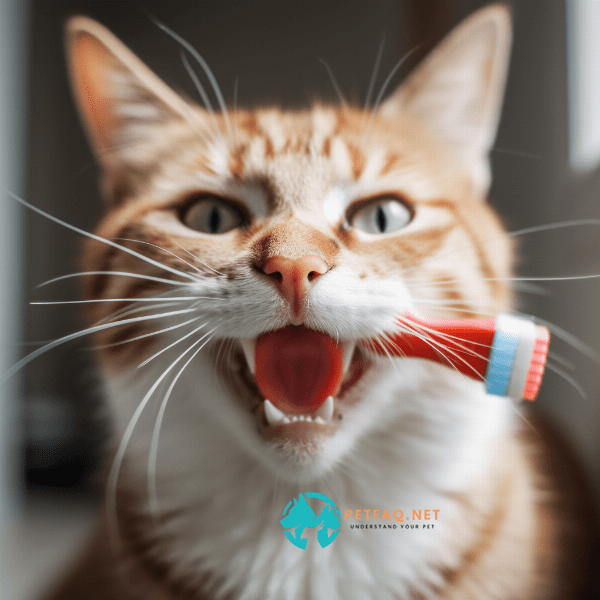
Home Care for Your Cat’s Teeth and Gums
Good dental hygiene practices at home are crucial for preventing periodontal disease in cats. Here are some tips for caring for your cat’s teeth and gums at home.
Brushing Your Cat’s Teeth
Regular brushing of your cat’s teeth is one of the most effective ways to prevent periodontal disease. Use a soft-bristled toothbrush and a cat-friendly toothpaste to gently brush your cat’s teeth and gums, focusing on the back teeth where plaque and tartar tend to accumulate.
Dental Chews and Treats
Dental chews and treats can also be effective in helping to prevent periodontal disease in cats. Look for products that have been specifically designed to help clean your cat’s teeth and remove plaque and tartar buildup.
Dental Rinses
Dental rinses can also be a useful tool for maintaining good dental hygiene in cats. These rinses can help kill bacteria in the mouth and freshen your cat’s breath, while also promoting healthy teeth and gums.
Regular Checkups
Regular dental checkups with a veterinarian are an important part of home care for your cat’s teeth and gums. These checkups can help identify early signs of dental problems and prevent them from developing into more serious issues.
Gentle Dental Massage
Gently massaging your cat’s gums with a soft-bristled toothbrush or your finger can also help improve dental health and prevent periodontal disease. This can help increase blood flow to the gums and promote healthy teeth and gums.
By following these tips for home care of your cat’s teeth and gums, you can help prevent the development of periodontal disease and ensure that your periodontal cat stays healthy and happy for years to come.
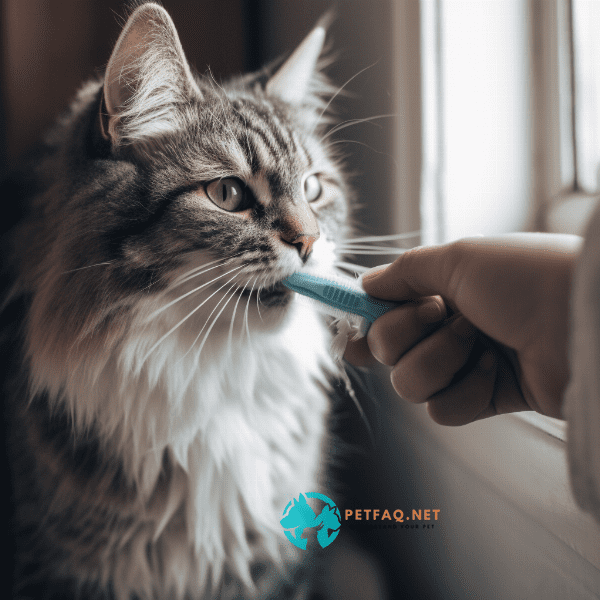
The Role of Diet in Feline Dental Health
A healthy diet is important for maintaining good dental health in cats. Here’s how your cat’s diet can impact their dental health and what you can do to promote healthy teeth and gums.
The Importance of Protein
Protein is an essential nutrient for cats and plays a crucial role in maintaining good dental health. A diet that is high in protein can help promote healthy teeth and gums, while also reducing the risk of periodontal disease.
Wet vs. Dry Food
The type of food that you feed your cat can also impact their dental health. Wet food can help keep your cat’s teeth and gums moist, which can prevent the buildup of plaque and tartar. Dry food, on the other hand, can help scrape away plaque and tartar as your cat chews.
Choosing the Right Diet
Choosing the right diet for your cat is crucial for promoting good dental health. Look for high-quality cat food that is rich in protein and free from artificial preservatives and fillers. You can also talk to your veterinarian about specialized dental diets that are designed to promote healthy teeth and gums.
By understanding the role of diet in feline dental health and choosing the right diet for your periodontal cat, you can help promote healthy teeth and gums and prevent the development of periodontal disease.
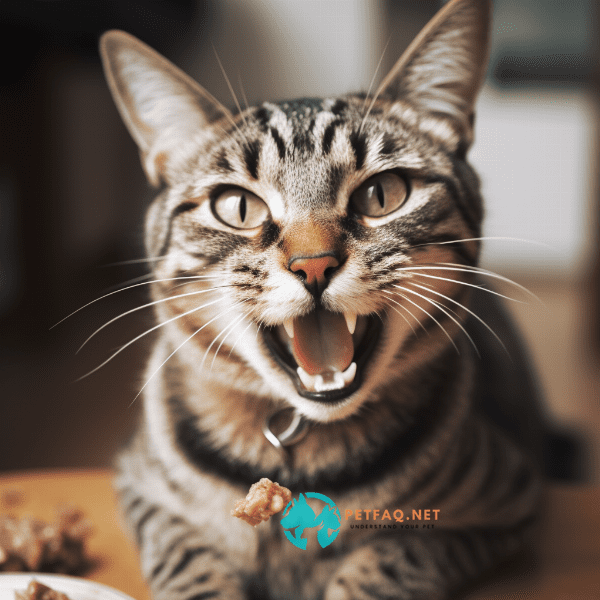
When to See a Vet for Your Cat’s Dental Health
Regular veterinary checkups are an important part of maintaining good dental health in cats. Here are some signs that it may be time to schedule a visit with your veterinarian to address your periodontal cat’s dental health.
Changes in Eating Habits
Changes in your cat’s eating habits can also be a sign of dental problems. If your cat is avoiding certain types of food, eating more slowly than usual, or showing signs of pain or discomfort when eating, it may be time to schedule a visit with your veterinarian.
Red or Swollen Gums
Inflammation of the gums is a common sign of periodontal disease in cats. If your cat’s gums appear red or swollen, or if you notice bleeding when you touch their gums, it’s time to schedule a visit with your veterinarian.
Behavioral Changes
By being aware of the signs of dental problems in cats and knowing when to seek veterinary care, you can help prevent the development of periodontal disease and other dental problems in your periodontal cat.
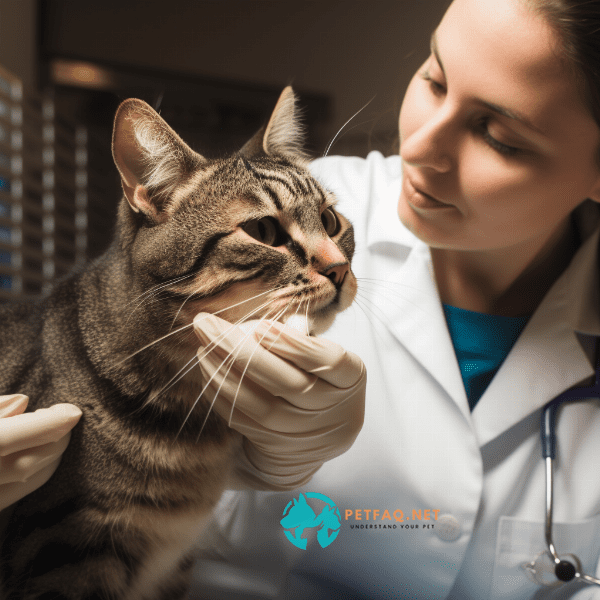
Conclusion: Keeping Your Cat’s Teeth and Gums Healthy for Life
Periodontal disease can have serious consequences for your cat’s health, but with the right care and attention, you can help keep your cat’s teeth and gums healthy for life.
Good Dental Hygiene Practices
Regular Home Care
In addition to regular dental checkups and good dental hygiene practices, providing your cat with regular home care is crucial for maintaining good dental health. This may include brushing your cat’s teeth, using dental chews or treats, and incorporating a dental rinse into their routine.
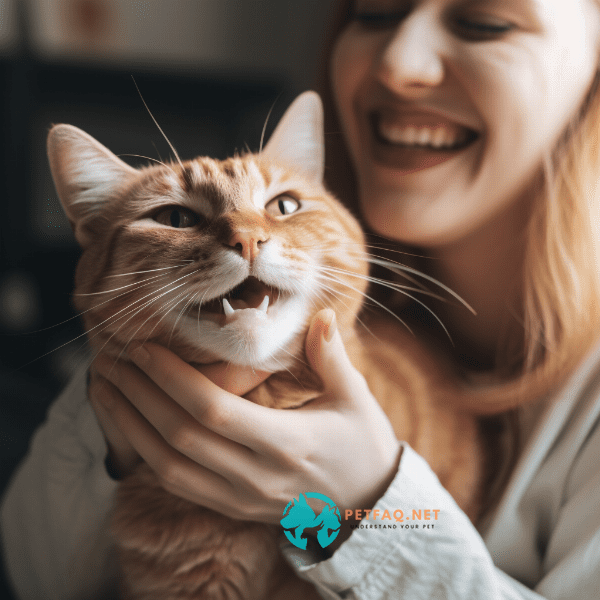
Frequently Asked Questions (FAQs) about periodontal cat:
1. Are some cat breeds more susceptible to periodontal disease?2. Is periodontal disease in cats painful for them?
3. Can periodontal disease in cats lead to other health problems?
4. Can periodontal disease in cats be prevented?
5. How long does it take to treat periodontal disease in cats?

